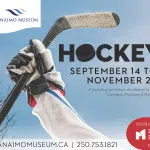
Northern spotted owl found injured near B.C. train tracks two months after release
VANCOUVER — One of just four endangered spotted owls known to be in the wild in British Columbia is now recovering from an injury after being found along some train tracks, slowing the careful plans to revive the species, a breeding facility co-ordinatorsaid.
The injured bird had been released last August along with two others in forests near the Spuzzum First Nation, about 200 kilometres northeast of Vancouver, said Jasmine McCulligh, the facility co-ordinator for the Northern Spotted Owl Breeding Program.
They believe the owl — named Sitist, which means night in the Spuzzum language — may have collided with a passing train, McCulligh said.
A railway worker noticed the injured bird in October and brought it to the Orphaned Wildlife Rehabilitation Society in Delta for treatment.


